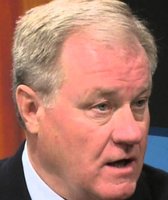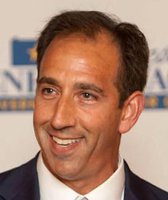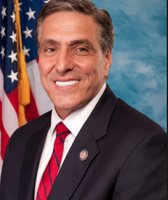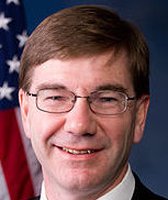Stand up for the facts!
Our only agenda is to publish the truth so you can be an informed participant in democracy.
We need your help.
I would like to contribute
At first it appears to be an ordinary political yard sign. Closer inspection reveals it to be anything but.
It’s topped with the words "Lackawanna County Democrats" but filled with endorsements of Republicans running in key and contentious Pennsylvania midterm races. They include gubernatorial candidate Scott Wagner, U.S. Senate candidate Lou Barletta and 8th Congressional District candidate John Chrin.
The sign also calls for eliminating school taxes and ending sanctuary cities, favored talking points of the Wagner and Barletta camps, respectively.
A photo of the sign appeared in a Sept. 24 Facebook post by the Young Republicans of Lackawanna County. That post has been shared hundreds of times since, in some cases by Facebook users holding it up as an example of the #WalkAway movement, in which Democrats publicly renounce the party they feel has gone too far left. The Young Republicans made this connection themselves.
"It’s happening !!!" the organization’s original post reads. "‘Concerned Democrats’ paid for this big sign in Dickson City PA. [...] It seems the National Democratic Party has gone off the rails. Too far left. #walkaway is alive and well in #lackawannacounty."
But are Democrats making the switch?
A PolitiFact Pennsylvaniareader — who first notified us of the sign in Lackawanna County and the Young Republicans’ social media post — wondered if related claims of Democrats jumping ship to endorse Republican candidates were "Fact, fiction or somewhere in between?"
We decided to take a look.
Cross-endorsements in Pa.?
First we spoke to Chris Patrick, chairman of the Lackawanna County Democratic Committee. Patrick said the committee is "one-million percent" behind Democrats running in those races: Governor Tom Wolf against Wagner, Sen. Bob Casey against Barletta and U.S. Rep. Matt Cartwright against Chrin.
He said the Dickson City sign featured in the Young Republicans’ Facebook post is real and belongs to a former Democratic county official who has been openly advocating for conservative candidates since around the time of the 2016 presidential election.
Phone messages left for that former official were unsuccessful this week.
"We know it’s his property," Patrick said of the sign, adding, "I can’t control what a couple of rogue Democrats decide to do." Patrick said a similar sign had popped up nearby but added, "Last I knew that family was Republican."
A spokesperson for Wagner’s gubernatorial campaign said he was unaware of any endorsements of Wagner by Pennsylvania Democratic groups or committees.
David Jackson, a spokesman for Barletta’s campaign, said he was previously unaware of the Lackawanna County Facebook post but added, "Congressman Barletta is proud to have the support of both Democrats and Republicans..."
So, to answer the reader’s question: There is no evidence of cross-endorsements by Pennsylvania Democratic organizations and groups in the races for governor and U.S. Senator from Pennsylvania — the most high-profile on the slate right now. This is according to representatives of the Republicans running in those races.
Are Pa. Dems #WalkingAway?
The Republican Party of Pennsylvania has encouraged disillusioned Democrats to renounce the party, mailing voters registration formsin September that urged Democrats to "#WalkAway from their Party’s run to the socialist left" and which linked the party to the anti-fascist or antifa movement.
"The Pennsylvania Republican Party wants to let disillusioned Democrats know they have a home in the Republican Party, which stands for limited government, respect for the rule of law, and fiscal accountability," reads a statement from the Pennsylvania Republican Party announcing the mailer campaign.
But are Democratic voters getting behind Republican candidates? That’s impossible to say writ large.
What we can say, though, is whether Democrats are changing their party affiliations and getting behind the Republican Party. All we had to do was pull voter registration data from the Pennsylvania Department of State, the organization charged with overseeing elections statewide.
2018
According to the Department of State, 28,595 Pennsylvania Democrats switched their registration to Republican while 21,022 Republicans became registered Democrats this year. (It’s not clear how many of those switches occurred before the May primary, but 2,076 Democrats went Republican and 1,612 Republicans went Democrat on the week of Sept. 24 alone.)
Also, nearly twice as many unaffiliated or third party voters in Pennsylvania became Democrats this year. Statewide, 22,543 of these "other" voters, as the Department of State categorizes them, registered as Democrats compared to 12,936 who registered as Republicans. (In Lackawanna County, where this question began, more of these voters went Democrat, too, by a margin of 257 to 154.)
The net effect is a boost for Pennsylvania Democrats this year.
"We’re talking about Democrats being more motivated and more enthusiastic," said G. Terry Madonna, director of the Center for Politics and Public Affairs at Franklin & Marshall College and director of the Franklin & Marshall College Poll.
Heightened enthusiasm among liberals, heightened engagement among millennials, movement of college educated white women away from the Republican Party,and third party voter antipathy toward the president are all factors affecting voter registration and registration switches in Pennsylvania this year, he said.
There is also the so-called "Kavanaugh effect," though Madonna sees it as a greater motivator for Republicans right now, but overall, he said the political moment "favors Democrats more than Republicans, no doubt."
This year, the highest number of registration changes were seen in Pennsylvania counties with the largest populations. This includes 2,674 Democrats and 2,120 Republicans who swapped parties in Allegheny County and 2,399 Democrats and 2,148 Republicans who did the same in Philadelphia County.
In Lackawanna County, 614 Democrats went Republican while 432 Republicans went Democrat this year.
So party switches are happening, but they’re nothing new.
In fact, they’ve slowed considerably since President Donald Trump took office. This isn’t necessarily unusual given the high bar set in 2016 and the general lull in voter activity that comes after a presidential campaign. Here's a look at years past:
2017
- 29,354 Pennsylvania Democrats become registered Republicans.
- 19,815 Republicans become registered Democrats.
2016
- 113,870 Democrats go Republican.
- 47,585 Republicans go Democrat.
2015
- 30,482 Democrats go Republican.
- 17,289 Republicans go Democrat.
2014
- 19,903 Democrats go Republican.
- 16,559 Republicans go Democrat.
2013
- 16,921 Democrats go Republican.
- 12,454 Republicans go Democrat.
Between 2008 and 2017 in Pennsylvania, 335,745 Democrats became Republicans and 191,926 Republicans became Democrats. Also during that time period, 189,913 unaffiliated or third party voters became Democrats and 144,270 became Republicans.
Of course there’s no way of knowing exactly how many Pennsylvanians will vote for the other party this year without changing their registration.
But as of Oct. 1, Pennsylvania was home to 4.06 million registered Democrats, 3.24 million registered Republicans and 771,380 unaffiliated voters.
So, yes, Democrats are going Republican, Republicans are going Democrat, but other voters are adding or changing affiliations, too, and more of them are going blue.
Our Sources
Pennsylvania Department of State, voter registration statistics by county, Oct. 1, 2018
Phone interview, G. Terry Madonna, director of the Center for Politics and Public Affairs at Franklin & Marshall College and director of the Franklin & Marshall College Poll, Oct. 5, 2018
Phone interview, Chris Patrick, chairman of Lackawanna County Democratic Committee, Sept. 28
Email interview, David Jackson, press secretary, Lou Barletta for U.S. Senate, Oct. 2, 2018
Email interview, Andrew Romeo, communications director, Scott Wagner for Governor, Sept. 28, 2018





































